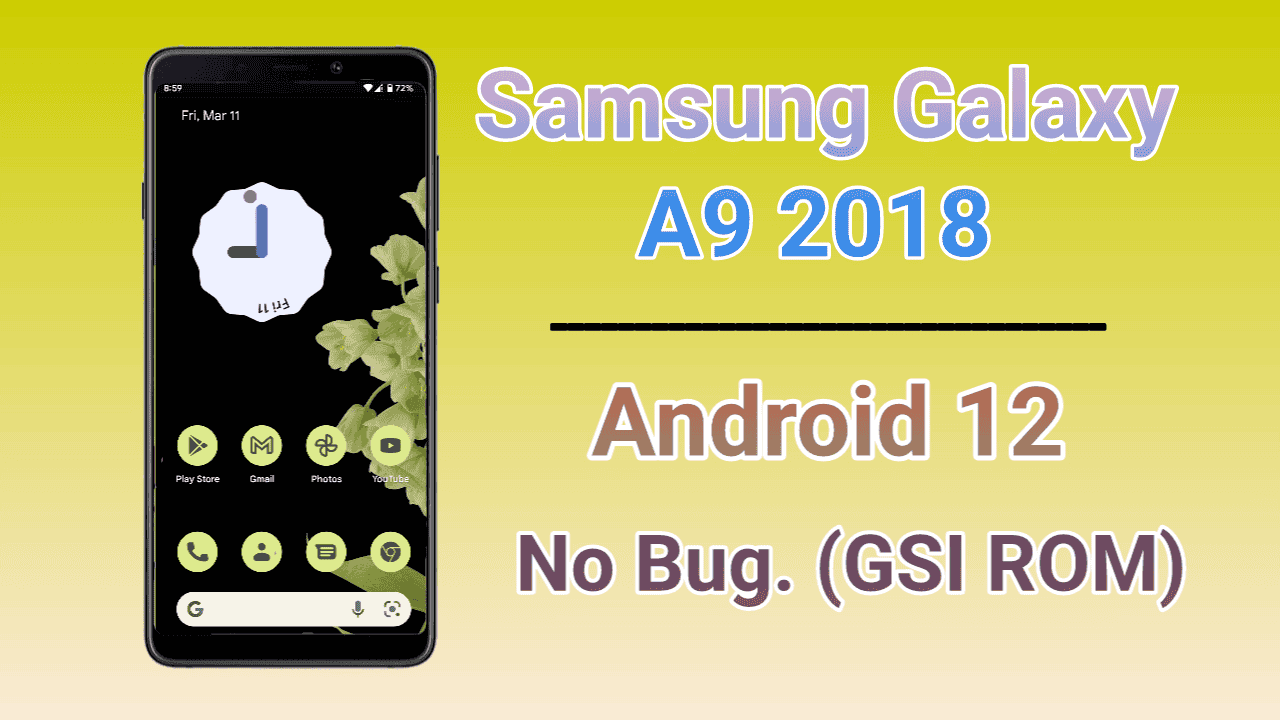Upgrading your phone to the latest version of Android is always an exciting adventure, bringing new features and improvements to your device. The Samsung Galaxy A9 2018 is no exception, and the release of Android 12 offers a multitude of benefits for the phone.
In this article, we will walk you through the process of installing Android 12 on your Samsung Galaxy A9 2018. With our guidance, you’ll be able to upgrade your phone to the latest and greatest version of Android and start experiencing all the new features and improvements it has to offer. So, let’s get started.

Table of Contents
Requirement for Installing Android 12 on Samsung Galaxy A9 2018
Before you start the process of installing Android 12 on your Samsung Galaxy A9 2018, there are a few things you will need to have in place. It is important to ensure that you have all the necessary requirements before proceeding to prevent any issues during the flashing process.
The requirements for flashing Android 12 on your Samsung Galaxy A9 2018 are as follows:
- Install 1st Custom Recovery TWRP (Read here how)
- Download Custom Kernel (here)
- Download GSI ROM (here)
- Download GSI Lock Screen Fix (here)
It is important to choose and download the perfect GSI ROM for your Samsung Galaxy A9 2018. Make sure to read this: “how to select and download the right GSI ROM for your Samsung Galaxy A9“.
In the next section, we will go through the steps of installing the custom recovery and downloading the necessary files to prepare your Samsung Galaxy A9 2018 for the Android 12 upgrade.
How to Install Android 12 on Samsung Galaxy A9 2018
Now that you have completed all the requirements for installing Android 12 on your Samsung Galaxy A9 2018, it’s time to flash the GSI ROM. This process involves several steps, so make sure to follow each one carefully to avoid any issues.
Here are the steps to flash the GSI ROM Android 12 on your Samsung Galaxy A9 2018:
- Power off your phone.
- Boot into custom recovery mode (TWRP).
- In TWRP, wipe Dalvik Cache, Cache, System, and Data.
- Install the GSI ROM > system image.
- Flash a custom kernel.
- (Optional) Flash Magisk zip if desired.
- Reboot to the system.
My Recommended GSI ROM for Samsung Galaxy A9 2018
If you’re looking to install Android 12 on your Samsung Galaxy A9 2018, I recommend the Pixel Experience GSI ROM. In this article, I’ll be explaining how to install this particular GSI ROM on your device. If you’ve come here from my YouTube video, you’ll have seen me demonstrate the installation process using this specific ROM.
Unfortunately, at this time, the options for Android 12 GSI ROMs on the Samsung Galaxy A9 2018 are limited. The device does not support camera2api, so while other Android 12 and 13 ROMs may be installed successfully, the camera may not work properly. If a new GSI ROM that is compatible with the Samsung Galaxy A9 2018 is released in the future, I will upload a video about it on my YouTube channel. So, make sure to keep an eye out for updates.
For now, I highly recommend following the installation process outlined in my YouTube video, where I demonstrate how to install the latest Android 12L Pixel Experience GSI ROM. With this ROM, you’ll be able to enjoy all the new features and improvements of Android 12L on your Samsung Galaxy A9 2018.
Conclusion
Installing Android 12 on your Samsung Galaxy A9 2018 can be a bit of a complex process, but with the right guidance and tools, it’s definitely possible. By following the steps outlined in this article, you should be able to successfully install Android 12 on your device and start enjoying all the new features and improvements it has to offer. However, as with any custom ROM installation, it’s important to be cautious and make sure to backup your data before proceeding. If you have any questions or concerns, don’t hesitate to comment below.
Hi do you have android 14 custom rom for Samsung galaxy a9 (2018)?
Custom ROMs are not available for the Samsung Galaxy A9 2018; however, you can install a GSI ROM. The Galaxy A9 does not support Camera2API, so ROMs above Android 11 may have camera issues. Nevertheless, some Android 12 GSI ROMs include Camera HAL1 API, which makes some features work, such as the Pixel Experience by Ponces.